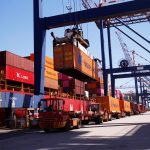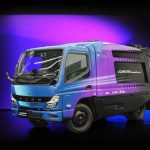The importance of participative management
The importance of participative management
It is a proven fact that when employees understand why they are expected to do certain things, they tend to do them better. Similarly, writes JIM WARD, involving employees in the project design or development process early on increases the likelihood of rapid buy-in and commitment when that design becomes a reality.
I have deliberately avoided mentioning names in previous columns. I cannot avoid doing so here, but for all the right reasons. The organisations named can be proud of what they did, because they were helping to enable the process of employee involvement in the early stages of product development. When end-users feel they have played a personal part in designing new equipment, or understand something more deeply, it changes the way they perceive it. They become a part of it and feel they have “skin in the game”; in some small way, they have a personal stake in the success of a venture or product.
Several decades ago, I was directly involved in the field testing and first use of a new type of low ground pressure in-field cane hauler. This coined the term Articulated Cane Truck (ACT). Working closely with Bell, Richards Bay (before the John Deere tie up), I drove a group of Swazi drivers, supervisors, and section managers to view the first ACT cab on the production line being connected to its cane trailer. Bell Equipment gave us a warm welcome, showed us around the plant, fed us all a good Natal curry in their canteen, and gave the drivers a chance to voice feedback on control placement, cab comfort, seat position, and so on. At last, the new machines they had only heard about up to that point could be seen in the metal, shod with their big Michelin tyres.
The trip was a tremendous success. Most of the men had never crossed an international border before and had never seen the sea, and the excited buzz in the HiAce on the way back proved to be a great foundation for the day when the equipment arrived and the new season started.
Emboldened by that factory visit, I began making use of willing suppliers, sometimes to address specific operational problems. When we were struggling with increased tyre write-off costs, mainly due to driver carelessness, I contacted Dunlop, who kindly allowed me to take a group of drivers and a shop steward to visit their truck tyre factory (then in Durban). They were able to see breaker belts being woven out of copper-coated cables, and could speak to workers building new steel belt truck tyres on tyre building machines. They saw new tyres in sizes they recognised going into the moulds to be vulcanised and finished, and this was a major revelation. Arising from that visit, the word went out that a huge amount of effort went into building truck tyres and that they cost a fortune, and this helped create a better understanding of what could harm them. Tyre damage decreased: mission accomplished.
MAN Truck & Bus allowed me to take a small group of clients to see their new trucks coming off the line in Pinetown. We witnessed a special build for a catching fleet in the poultry industry. They hosted us royally, with impeccable timing, such that the group could witness their own chassis numbers rolling off the line and watch the first engine startup.
When the employees and contract manager stood next to “their” new truck, first to emerge from the plant, before it was repainted in livery or had any special equipment installed, I could see from their expressions that the vehicles would be well received.
For those employees to see firsthand the level of care and detail that goes into assembling a new truck changed their entire thinking about what capital investment and re-fleeting really meant. The brand pride and build complexity was evident, and they could speak to workers on the line to find out why components were fitted to the chassis in such a specific order. Seeing a 460-hp truck engine and transmission being lowered into a rolling chassis is always an amazing thing. That fleet went into service without a hiccup, and on other occasions UD Trucks and Scania were similarly receptive and welcoming.
Legendary trailer manufacturer Henred Fruehauf in Bloemfontein allowed me to visit with senior contract managers and key technical staff for a pre-production meeting with the company’s designers. We saw our new trailers virtually, in 3D, and the engineers could flip them over or lie them on their sides to simulate dynamic loads and the way stress would flow through certain components. We, in turn, told the designers and structural engineers where existing trailers would crack or corrode, and indicated where additional cross members, gussets, and struts were needed… and they listened to us!
As we described the realities of a high intensity 24/7 loading process, with heavy-duty cycles on uneven ground, they better realised the enormous load stresses that their suspension, trailer decks, and rubbing plates would be subjected to – and they began to understand why I had insisted on such heavily rated components. Several important modifications emerged from that visit, resulting in a much-improved final design, allowing the new trailing fleet to enter service faultlessly. Key staff were involved at the outset and their insights, forged from firsthand operational experience and years of maintenance, guided numerous unique design changes and improvements. Everything we requested was there, in painted steel, on the final versions as delivered. An entire cost layer of fault rectification and downtime lost in the endless welding of cracks was removed thanks to involvement from day one.
I endeavoured to provide exactly what equipment was needed and catch any flaws during the development stage, when they could still be addressed. The contracts that participated in the design process would then receive exactly what they wanted, not a compromise vehicle or machine. They also understood the pressures of a long build programme more clearly.
These golden opportunities also allowed the back-room boys – the young structural engineers, draftspersons, production managers, metal workers, and factory workers who seldom get a chance to meet their customers – to interact with us, the clients, face-to-face. They could ask over a meal: “But why do you want it like that, it seems like overkill and it’s costly to manufacture?” and we could answer that it had to be like that because of a specific operational need.
Because we could explain these needs in detail, they could for the first time understand exactly why things needed to be just so. This was a game changer. During these visits, both sides of the table learnt something new. They discovered more about what drove our bottom line and why certain things mattered, and we had a clearer idea of what was entailed in manufacturing that trailer, truck, forklift, axle, or truck tyre.
If there is money for golf days, open days, corporate prizes, and sponsorships, for painting pre-schools and trade shows, then there should be money and time for these visits. Yes, it steals a few hours from the working days of the busiest people, but consider what it achieves.
I salute all the enlightened, forward-thinking organisations that enabled these knowledge exchanges over the years, and I have mentioned but a few examples. They opened their doors to us, nurturing an environment of end-user involvement and ultimately helping them produce better final products. Interactions like these reveal what goes on behind the scenes and are usually highly informative to both the buyer and the seller.
Published by
Jim Ward
focusmagsa




